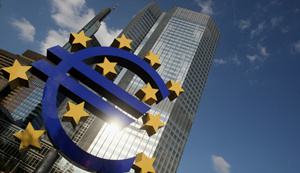- Product Center
- Anbang News
- Industrial & Commercial Ne..
- Warm Knowledge
- News & Notice
- Trace Heating
- New York heavy snow
- The Northeast American hit by heavy snow,the roof electric heat tracing is very effective
- Contact US
-
TEL:
0086-550-2399006FAX:
0086-550-2399018PHONE:
0086-18355088886EMAIL:Dennis@cnheatingmat.com
After-sales service:Afterservice@anbangcn.com
ADDRESS:
No288.Tianye North Road TianChang City,Anhui,China,239354

How Europe can get out of its economic mess

There is simply no easy fix for Europe’s depressed economy.
While another healthy dose of monetary stimulus might help bring down the fever and provide some short-term relief, it won’t cure the patient. For that, Europe needs to take on some tough structural reform aimed at attracting a steady stream of private investment. While that’s no easy task, it’s hardly impossible.
Data released Thursday on the health of Europe’s economy painted a bleak picture. Overall economic growth in the second quarter of the year was flat, effectively ending an economic recovery on the continent some had believed was just in its infancy. Among the economic losers was Germany, Europe’s largest and most resilient market. Its economy contracted 0.2% from the previous quarter on weak consumer sentiment and tepid industrial production.
As for the rest of the continent, while there was some encouraging news from Europe’s periphery, with Spain posting a relatively healthy uptick in GDP, things, for the most part, were pretty depressing. Given how far the economies of Spain and the rest of the periphery have fallen over the last few years, they’ll need to see much stronger growth if they ever hope to get back on sound economic footing.
As the sorry economic news hit the tape, sovereign bond yields across the continent fell as investors fled to safety. That increase in demand pushed yields on the German 10-year bond below 1% for the first time ever. Investors were essentially betting that the weak GDP numbers would prod the European Central Bank to set off another round of monetary stimulus, this time through an asset buying program.
The ECB didn’t react immediately, which isn’t a surprise given that the entire continent is on vacation at the moment. Nevertheless, investors are confident that the central bank will soon move to address the weakness at the heart of Europe’s economy through increased stimulus of some kind.
That may be true, but it doesn’t shed any light on the fate of Europe’s long-term economic prospects. Such heavy doses of monetary stimulus may move rates, but it won’t foster economic growth on its own, especially the sort of long-term growth needed on the continent.
Just look at Japan. Its economy has been in a slow and painful decline for the past 25 years. That’s because Japan thought it could solve its economic issues by throwing money at the problem and hoping the bad news would just go away. When bond yields fell below 1%, it too embarked on round after round of monetary stimulus and quantitative easing in the hopes of reigniting growth. A decade later, Japan is no better. It reported a 6.8% (annualized) drop in its GDP on Tuesday for the second quarter. While much of that decrease has been attributed to an increase in the state consumption tax, it remains a sizable move to the downside.
Japan’s latest move to boost its economic fortunes isn’t looking like it’s working, either. The radical plan, which would see its central bank essentially doubling the money supply in a bid to fight off deflation, hasn’t worked out as well as some had hoped.
What Japan needs is some real private investment, not more financial engineering. The same holds true for Europe. Among the most worrisome statistics released Thursday were those concerning investment, which decreased 1.1% in the quarter. Corporate investment was down 0.8%, its 10th consecutive quarter of negative growth. Even worse was household investment, which shrank a horrifying 2.4%. Since the start of the financial crisis, gross fixed capital formation across the European Union has been down a cumulative 15%, according to the German Institute for Economic Research.
The investment shortfall across the eurozone now stands at a staggering 2% of GDP, or about 200 billion euros a year. Something must be done to address this investment shortfall as soon as possible or else Europe could find itself caught in a destructive, deflationary spiral that could take years to unravel.
So, how can Europe attract more investment?
Changing its tax laws to encourage and reward people who invest their money in the equity markets would be a good start. Lowering capital gains taxes, or eliminating them altogether, at least temporarily, could help accomplish this. European companies aren’t doing too shabby at the moment, despite the sour economic environment, so investing in them is hardly charity.
Europe could also move to create a common investment vehicle aimed at private sector lending. Such a fund has been proposed by the German Institute for Economic Research, which believes it could provide the boost needed to get investment rolling on the continent. They would like to see 100 billion euro (minimum) fund for investments to be made all across the continent—not just on the periphery but in the core countries as well.
Both ideas would require harmonization of investment and banking laws across the continent, something that the E.U. has been dragging its feet on for several years now.
Achieving real and sustainable investment in Europe is going to be tough. It requires not only closer E.U. integration but also a shift in investors’ perceptions of the continent’s economy and its workforce. Investors need to be convinced that Europe really wants to grow and that its leaders won’t sell them out for short-term political gains. When that happens, Europe could see explosive growth. Let’s hope the continent’s leaders don’t take a quarter of a century to figure all this out.
Recommend Links:



